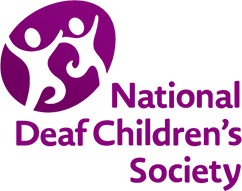Glossary: A
Abutment
A metal fixing attached to the skull which allows a bone conduction hearing implant (BCHI, sometimes known as a BAHA), to be attached or removed easily.
Acoustics
The science of sound. This often refers to the quality of the sound environment. For example, good classroom acoustics are achieved by maintaining a low level of background noise and using soft furnishings to reduce reverberation (when sounds bounce off hard surfaces).
Acquired deafness
When children are born hearing but become deaf later, often as a result of an illness such as meningitis.
Additional learning needs (ALN) – Wales
A child or young person has ALN if they have a learning difficulty or disability that makes it harder for them to learn compared to other learners their age.
Additional support for learning (ASL) – Scotland
ASL applies where a child needs additional support to benefit from education. Under the ‘Getting it right for every child’ (GIRFEC) framework, ASL can include a Child’s Plan, Individual Educational Programme (IEP) or Coordinated Support Plan (CSP).
Additional Support Needs Tribunal – Scotland
Considers appeals (references) against decisions made by education authorities about the provision of educational support.
Aetiology
The causes of deafness.
Alerting devices
Equipment which lets deaf people know when something is happening, using either light, vibration, sound or a combination. For example, there are alarm clocks that have a vibrating pad that can be put under a pillow or mattress, and a flashing light. Other items include doorbell alerters, smoke detectors and telephone indicators.
Amplification or amplify
Makes sounds louder.
Amplified telephone
These telephones have a high-volume setting or a telecoil in the handset which allows the user to switch their hearing technology to ‘T’ to hear the caller.
Annual review (education)
A yearly review meeting about a child's statement of special educational needs (England and Northern Ireland), Education, Health and Care (EHC) plan (England), Individual Development Plan (IDP) (Wales) or Coordinated Support Plan (CSP) (Scotland). The main purpose is to monitor your child's progress and to see if the statement or plan needs to be changed.
Anti-bullying policy
An official, agreed way of preventing and dealing with all forms of bullying. Headteachers must, by law, put in place an anti-bullying policy.
Atresia
In relation to deafness, atresia is the absence of an ear canal. Microtia is often accompanied by atresia.
Attenuator
Reduces the level of sound heard through a stetoclip and allows hearing parents and professionals to listen to powerful hearing aids at a comfortable volume.
Audiogram
A chart that shows your hearing test results. It shows how loud a sound has to be, and at what frequency, before your child can hear it. Sometimes separate charts will be used to show results for each ear.
Audiologist or clinical scientist (audiology)
The person who carries out the hearing tests on your child. They’ll interpret the information given by the hearing tests to determine your child’s level of deafness and should tell you about the options available. They also make earmoulds, fit hearing aids and review your child's progress with their hearing aids.
Audiovestibular (or audiological) physician
A consultant doctor who specialises in investigating, diagnosing, and managing hearing and balance disorders.
Auditory Brainstem Response (ABR) test
Measures the levels of sound that can be detected by the inner ear (cochlea) by recording tiny electrical signals sent to the brain by the auditory (hearing) nerve.
A simple, automated version of this is used as part of the newborn hearing screening. Babies who do not pass the hearing screen are then referred for a full (diagnostic) ABR test. The test is usually performed on babies but can be carried out on older children as well. Some children may need sedation if they cannot stay very still and quiet throughout the test.
During the test, several small sensors are placed on your child's head, and sounds are played into the ear by either ear inserts or headphones.
Auditory (hearing) nerve
Carries signals from the cochlea to the brain where they are understood as sound.
Auditory neuropathy spectrum disorder (ANSD)
A type of sensorineural deafness which occurs when sounds are received normally by the cochlea (inner ear) but become disrupted as they travel to the brain because the auditory (hearing) nerve is not firing properly. For children with ANSD, sounds they hear can be distorted. ANSD is called a spectrum disorder because if affects children in different ways, with symptoms ranging from mild to severe.
Auditory Processing Disorder (APD)
Difficulty with listening and making sense of sound above that which can be explained by hearing levels, especially in environments with lots of background noise. Hearing levels are often normal.
Autosome
Any chromosome that is not a sex chromosome. Humans have 22 sets of autosomes.
